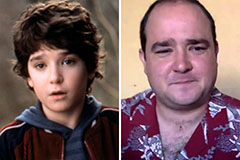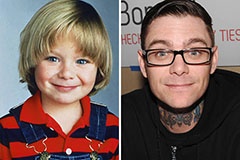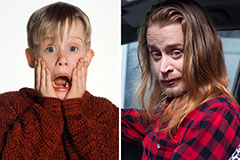What Back Issues Usually Lead to Procedure for Alleviation?
Back issues that necessitate medical treatment commonly occur when conservative therapy options fall short to offer adequate alleviation from persistent discomfort and functional problems. Conditions such as herniated discs, back stenosis, and degenerative disc disease frequently bring about procedures focused on bring back and relieving symptoms mobility. Recognizing the particular signs for surgical treatment and the types of treatments readily available is important for both individuals and medical care companies. As we discover the complexities bordering these spine issues, it becomes noticeable that the decision to go after medical alternatives is complex and warrants cautious consideration.

Herniated Discs
When traditional treatments fail,Herniated discs are an usual spine condition that regularly leads to surgical treatment. This problem happens when the soft inner gel of a back disc extends through a tear in the tougher external layer, potentially compressing nearby nerves. Symptoms commonly consist of local pain, radiating discomfort in the arm or legs, and neurological deficits such as tingling or weak point.
/0x0:512x512/prod01/channel_2/media/mccms/content-assets/academics/residencies-and-fellowships/spine-surgery-fellowship-minnesota/overview/final-512X512-OR710-2020-10-05_0007.jpg)
Surgical procedure aims to ease pain and bring back feature by eliminating the herniated section of the disc or stabilizing the impacted back segment. While many clients experience considerable renovation following surgical treatment, it is essential to evaluate the advantages and threats in consultation with a qualified spinal column expert. Eventually, prompt treatment is necessary to improve and prevent additional issues lifestyle for people dealing with this incapacitating problem.
Back Constriction
Experiencing spine constriction can substantially influence a person's flexibility and lifestyle. This problem takes place when the back canal tightens, putting pressure on the spine cord and nerves. Commonly seen in the lumbar (lower back) and cervical (neck) areas, back constriction often results from degenerative adjustments linked with aging, such as joint inflammation, disc herniation, or enlarging of tendons.
Signs and symptoms of back constriction can vary, however they typically include pain, pins and needles, tingling, and weakness in the extremities. These signs might aggravate with task or long term standing and often enhance with remainder. In extreme cases, individuals might experience difficulties with equilibrium and sychronisation, causing an enhanced threat of drops.
When traditional therapies, such as physical treatment, medicines, and way of life alterations, stop working to relieve signs, surgical treatment may be taken into consideration. Treatments like laminectomy or spinal blend objective to unwind the afflicted nerves and maintain the back. Early diagnosis and treatment are critical in managing spinal constriction properly and maintaining flexibility, inevitably boosting the person's overall lifestyle.
Spondylolisthesis
Spondylolisthesis occurs when one vertebra slips ahead over the one below it, possibly resulting in spinal instability and nerve compression. This condition can occur from different factors, consisting of hereditary flaws, degenerative adjustments, injury, or repetitive stress injuries. Signs often include reduced back discomfort, stiffness, and radiating discomfort in the legs, which can significantly affect day-to-day tasks and overall lifestyle.
Medical diagnosis generally includes a complete Visit Website clinical assessment, imaging research studies such as X-rays or MRI, and analysis of neurological feature. The level of slippage is classified into grades, with higher grades suggesting a lot more extreme variation and a better likelihood of surgical intervention.

Very early medical diagnosis and ideal management are essential in stopping further complications and improving patient end results. As spondylolisthesis can bring about persistent pain and disability, prompt intervention is important for restoring spinal wellness.
Degenerative Disc Illness
Degenerative Disc Illness (DDD) is a condition identified by the progressive wear and tear of the intervertebral discs, which serve as critical shock absorbers in between the vertebrae of the back. As these discs shed hydration and elasticity with time, they come to be much less reliable at supporting the vertebrae, causing enhanced friction and stress and anxiety on the back structures.
Clients with DDD often experience signs and symptoms such as persistent pain in the back, rigidity, and lowered wheelchair (best spine surgeons in st louis mo). The condition can additionally lead to nerve compression if the degenerated discs lump or herniate, bring about radicular discomfort, weak point, or tingling in the limbs
Diagnosis generally includes a combination of checkups, imaging research studies like MRI or CT scans, and visit this site right here patient background to evaluate the extent of disc deterioration and its influence on everyday tasks. Treatment alternatives variety from traditional steps, consisting of physical treatment and discomfort management, to even more intrusive procedures when conventional procedures fail. Surgical treatments, such as back combination or artificial disc substitute, might be indicated for clients with considerable discomfort and useful impairment. In general, early treatment and customized monitoring approaches are vital for alleviating the results of DDD and boosting person outcomes.
Back Tumors
Back lumps, which can be deadly or benign, stand for an additional substantial reason of spine conditions that might require surgical treatment (best spine surgeons in st louis mo). These growths can originate within the spine (main growths) or spread from various other parts of the body (second growths) Their visibility can cause various symptoms, consisting of localized discomfort, neurological deficiencies, and alterations in mobility
Surgical treatment for back tumors usually intends to ease signs by eliminating the lump, stabilizing the back, and dealing with any type of compressive effects on the spine or nerves. Signs for surgery typically consist of considerable pain not responsive to traditional therapies, or neurological impairment arising from the growth's go to my site development.

It is important for individuals providing with signs and symptoms suggestive of back lumps to go through thorough analysis evaluations, including imaging research studies and biopsies, to establish the proper strategy (best spine surgeons in st louis mo). Early detection and treatment can considerably enhance person end results and high quality of life
Final Thought
In summary, numerous spine problems, including herniated discs, spine constriction, spondylolisthesis, degenerative disc disease, and spine growths, frequently require surgical intervention when conventional therapies fail to give relief. These conditions result in considerable pain and useful disability, prompting the factor to consider of treatments such as discectomy, spine blend, and laminectomy. Inevitably, surgical alternatives purpose to minimize discomfort, enhance flexibility, and restore high quality of life for individuals influenced by these crippling back disorders.
Conditions such as herniated discs, spinal constriction, and degenerative disc illness frequently lead to surgical treatments aimed at bring back and alleviating signs and symptoms movement.Herniated discs are a typical spinal problem that frequently leads to medical intervention when conventional therapies fall short. Surgical treatments, such as spinal combination or synthetic disc substitute, might be shown for patients with substantial discomfort and functional impairment.Back tumors, which can be deadly or benign, stand for one more significant cause of spinal problems that might demand surgical intervention.In summary, different spinal column problems, consisting of herniated discs, spinal constriction, spondylolisthesis, degenerative disc condition, and spinal lumps, often necessitate medical intervention when traditional treatments fail to supply relief.
 Bradley Pierce Then & Now!
Bradley Pierce Then & Now! Brian Bonsall Then & Now!
Brian Bonsall Then & Now! Jurnee Smollett Then & Now!
Jurnee Smollett Then & Now! Macaulay Culkin Then & Now!
Macaulay Culkin Then & Now! Marcus Jordan Then & Now!
Marcus Jordan Then & Now!